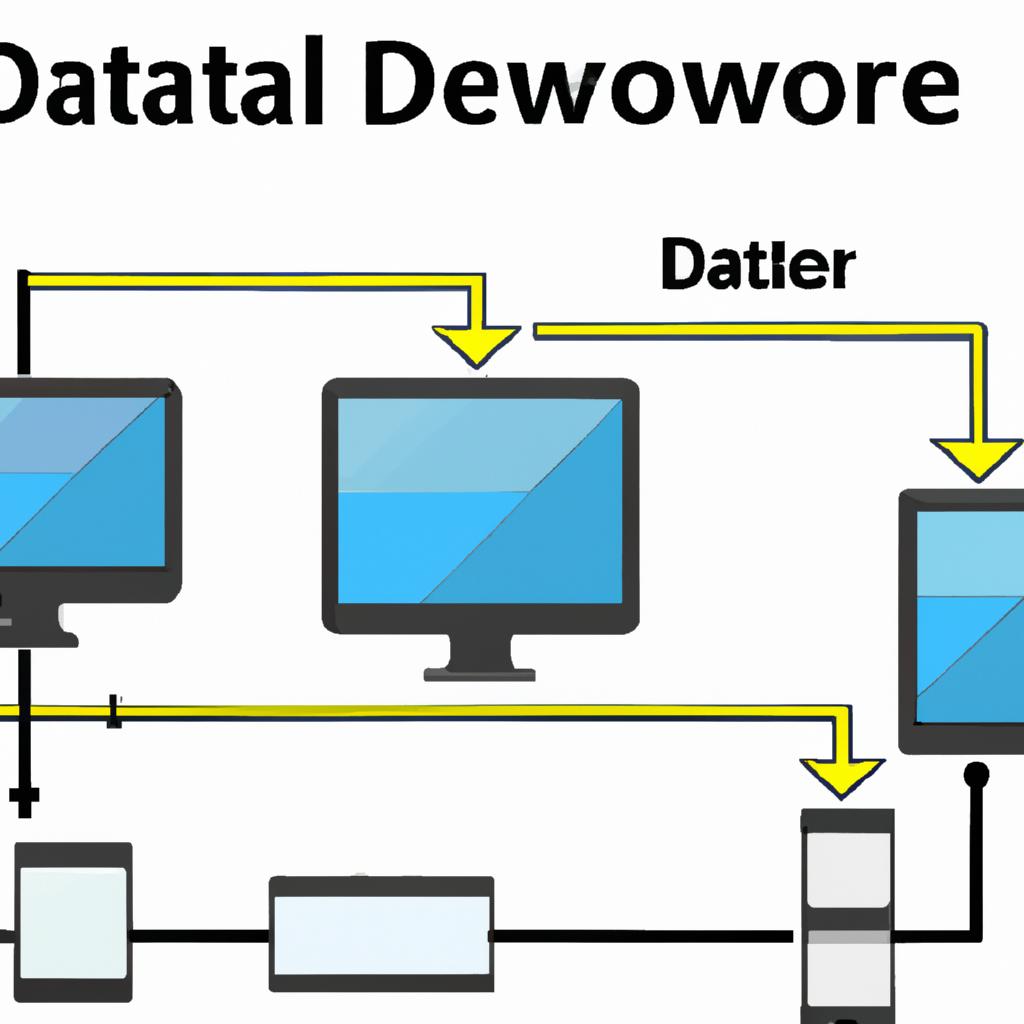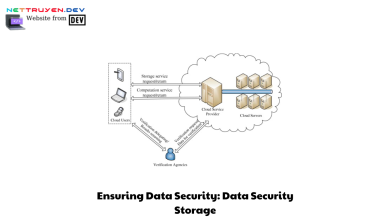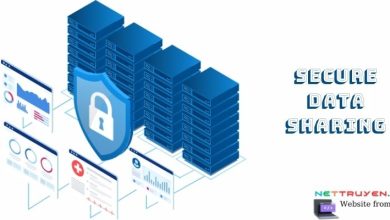Data Management Best Practices: Your Ultimate Guide

As data continues to play a paramount role in businesses, proper management of data is becoming increasingly important. Failure to manage data properly can lead to compromising sensitive information, poor-quality data, and increased security risks. In this article, we will explore the best practices for data management to help businesses manage their data effectively.
Introduction

data management best practices refer to a set of guidelines and procedures that help organizations manage their data effectively. It involves ensuring that data is accurate, secure, accessible, and up-to-date. Proper data management is essential for businesses to make informed decisions, improve customer experiences, and maintain compliance with regulations.
Importance of Implementing Data Management Best Practices

Implementing data management best practices provides numerous benefits to businesses, including:
- Improved data quality: Proper data management ensures that data is accurate, complete, and up-to-date. This ensures that businesses can make informed decisions and improve customer experiences.
- Enhanced data security: Proper data management helps mitigate security risks associated with data breaches and cyber-attacks.
- Compliance with regulations: Proper data management helps businesses comply with regulations such as GDPR, HIPAA, and CCPA.
- Improved efficiency: Proper data management helps businesses streamline their operations, saving time and resources.
In the next section, we will explore the best practices for data management.
Data Management Best Practices
When it comes to data management, there are several best practices that organizations should follow to ensure that their data is managed effectively.
Data Governance
Data governance is the process of creating and implementing policies, procedures, and standards for managing data. It involves defining roles and responsibilities for managing data, assigning ownership of data, and establishing guidelines for data management.
Effective data governance ensures that data is accurate, consistent, and accessible. It also helps businesses comply with regulations and maintain data privacy.
Data Quality
Data quality refers to the accuracy, completeness, and consistency of data. It is essential for businesses to ensure that their data is of high quality to make informed decisions and improve customer experiences.
Best practices for ensuring data quality include establishing data quality standards, performing data audits, and implementing data cleansing procedures.
Data Security
Data security is crucial for businesses to protect their data from unauthorized access, theft, and cyber-attacks. It involves implementing security measures such as firewalls, encryption, and access controls to ensure that data is secure.
Best practices for data security include performing regular security audits, establishing security policies and procedures, and conducting employee training on data security.
Master Data Management
Master data management involves creating a single, authoritative source of data that is used throughout the organization. It involves defining master data elements, establishing data quality standards, and implementing data governance procedures.
Effective master data management ensures that data is consistent, accurate, and up-to-date throughout the organization.
Data Integration
Data integration involves combining data from multiple sources to create a unified view of data. It involves establishing data integration standards, performing data mapping, and implementing data integration procedures.
Effective data integration ensures that businesses have access to accurate and up-to-date data, improving decision-making and customer experiences.
Data Architecture
Data architecture involves designing the structure and layout of data within an organization. It involves defining data models, data flow diagrams, and data architecture standards.
Effective data architecture ensures that data is organized, accessible, and secure, improving decision-making and business processes.
Data Governance
When it comes to data management, data governance is crucial. It involves the creation of policies, procedures, and guidelines that ensure that data is managed effectively and efficiently. In this section, we will explore the definition of data governance, its importance, and the best practices for data governance.
Definition of Data Governance
Data governance refers to the process of managing the availability, usability, integrity, and security of the data used in an organization. It involves the creation of policies, procedures, and guidelines to ensure that data is managed effectively and efficiently.
Importance of Data Governance
Data governance plays a critical role in organizations. It ensures that data is managed effectively, mitigating the risks associated with data breaches, cyber-attacks, and poor-quality data. Proper data governance also helps organizations comply with regulations, such as GDPR, HIPAA, and CCPA.
Best Practices for Data Governance
To effectively implement data governance, organizations should consider the following best practices:
Establish a Data Governance Committee
The first step towards effective data governance is establishing a data governance committee. The committee should be responsible for developing, implementing, and monitoring data governance policies and procedures.
Develop Data Governance Policies and Procedures
Organizations should develop comprehensive policies and procedures that govern the use, management, and protection of data. These policies and procedures should be reviewed regularly and updated as necessary.
Assign Data Stewardship Roles
Organizations should assign data stewardship roles to individuals responsible for managing specific data assets. Data stewards should ensure that data is accurate, complete, and up-to-date.
Implement Data Quality Management
Data quality management is essential for ensuring that data is accurate, complete, and up-to-date. Organizations should implement data quality management processes to ensure that data is of high quality.
Monitor and Audit Data Governance Processes
To ensure that data governance processes are effective, organizations should monitor and audit their data governance processes regularly. This will help identify areas for improvement and ensure that policies and procedures are being followed.
In the next section, we will explore the best practices for data quality.
Data Security
As data continues to play a crucial role in businesses, protecting sensitive information is becoming increasingly important. Data security refers to the measures taken to ensure that data is protected from unauthorized access, use, or disclosure. In this section, we will explore the importance of data security and the best practices for ensuring data security.
Importance of Data Security
Data security is essential for businesses due to the following reasons:
- Protecting sensitive information: Businesses need to protect sensitive information such as customer data, employee data, and financial information.
- Maintaining reputation: A data breach can cause significant damage to a business’s reputation, leading to loss of customers and revenue.
- Complying with regulations: Regulatory bodies such as GDPR, HIPAA, and CCPA require businesses to protect sensitive data and notify affected individuals in the event of a data breach.
Best Practices for Data Security
To ensure data security, businesses should implement the following best practices:
- Conduct a risk assessment: Businesses should identify the risks associated with their data and implement measures to mitigate those risks.
- Use strong passwords and multi-factor authentication: Passwords should be complex and changed regularly. Multi-factor authentication should also be used to add an extra layer of security.
- Implement access controls: Access controls should be implemented to ensure that only authorized personnel can access sensitive data.
- Encrypt sensitive data: Encryption should be used to protect sensitive data both in transit and at rest.
- Regularly backup data: Regular backups should be taken to ensure that data can be recovered in the event of a data breach or disaster.
In the next section, we will conclude the article and summarize the importance of implementing data management best practices.
Conclusion
In conclusion, data management best practices are essential for businesses to ensure that their data is accurate, secure, and up-to-date. Implementing these best practices helps improve data quality, enhance data security, comply with regulations, and improve efficiency.
To ensure proper data management, businesses must focus on data governance, data quality, data security, master data management, data integration, and data architecture.
By implementing the best practices for data management, businesses can make informed decisions, improve customer experiences, and maintain a competitive edge in their respective industries.
Remember, data is the lifeblood of any business, and proper management of data is essential. Start implementing these best practices today and see the difference it makes in your business.
Conclusion: So above is the Data Management Best Practices: Your Ultimate Guide article. Hopefully with this article you can help you in life, always follow and read our good articles on the website: nettruyen.dev




